-
Executive Summary
-
Market Introduction
-
Market Definition
-
Scope of the Study
-
List of Assumptions
-
Markets Structure
-
Market Research Methodology
-
Research
-
Process
-
Primary Research
-
Secondary Research
-
Market
-
Size Estimation
-
Forecast Model
-
Market Dynamics of the Global Fiber-Reinforced
-
Plastic (FRP) Grating Market
-
Introduction
-
Drivers
-
Restraints
-
Opportunities
-
Challenges
-
Trends/Technology
-
Market Factor Analysis of the Global Fiber-Reinforced Plastic (FRP) Grating
-
Market
-
Supply Chain Analysis
- Raw Material Type Suppliers
- Manufacturers/Producers
- Distributors/Retailers/Wholesalers/E-Commerce
- End-Use Industry
-
Porter’s Five Forces Analysis
- Bargaining Power of Buyers
- Bargaining
- Threat of Substitutes
- Intensity of Competitive
-
Threat of New Entrants
-
Power of Suppliers
-
Rivalry
-
Pricing Analysis
-
Global Fiber-Reinforced Plastic (FRP)
-
Grating Market, by Material Type
-
Introduction
-
Vinyl Ester Resin
- Market Estimates & Forecast, 2020−2027
- Market Estimates
-
& Forecast, by Region, 2020−2027
-
Polyester Resin
- Market
- Market Estimates & Forecast,
-
Estimates & Forecast, 2020−2027
-
by Region, 2020−2027
-
Others
- Market Estimates & Forecast,
- Market Estimates & Forecast, by Region, 2020−2027
-
Global Fiber-Reinforced Plastic (FRP) Grating Market, by Product Type
-
Introduction
-
Molded Fiberglass Grating
- Market Estimates &
- Market Estimates & Forecast, by Region,
-
Forecast, 2020−2027
-
Pultruded Fiberglass Grating
- Market Estimates
- Market Estimates & Forecast, by Region,
-
& Forecast, 2020−2027
-
Global Fiber-Reinforced Plastic (FRP) Grating Market, by
-
End-Use Industry
-
Introduction
-
Building and construction
- Market Estimates &
-
Market Estimates & Forecast, 2020−2027
-
Forecast, by Region, 2020−2027
-
Water & wastewater Treatment
- Market Estimates & Forecast, 2020−2027
- Market Estimates
-
& Forecast, by Region, 2020−2027
-
Chemical
- Market Estimates
- Market Estimates & Forecast, by Region,
-
& Forecast, 2020−2027
-
Food & beverages
- Market Estimates &
- Market Estimates & Forecast, by Region,
-
Forecast, 2020−2027
-
Oil & Gas
- Market Estimates & Forecast,
- Market Estimates & Forecast, by Region, 2020−2027
-
Others
- Market Estimates & Forecast, 2020−2027
-
Market Estimates & Forecast, by Region, 2020−2027
-
Global Fiber-Reinforced
-
Plastic (FRP) Grating Market, by Region
-
Introduction
-
North America
- Market Estimates & Forecast, 2020−2027
- Market Estimates
- Market Estimates &
- Market Estimates & Forecast,
- US
- Canada
-
& Forecast, by Material Type, 2020−2027
-
Forecast, by Product Type, 2020−2027
-
by End-Use Industry, 2020−2027
-
& Forecast, 2020−2027
-
Material Type, 2020−2027
-
Product Type, 2020−2027
-
Industry, 2020−2027
-
Forecast, 2020−2027
-
Type, 2020−2027
-
Europe
- Market Estimates & Forecast, 2020−2027
- Market Estimates & Forecast, by Material Type, 2020−2027
-
Market Estimates & Forecast, by Product Type, 2020−2027
-
Estimates & Forecast, by End-Use Industry, 2020−2027
-
& Forecast, by Material Type, 2020−2027
-
& Forecast, by Product Type, 2020−2027
-
Forecast, by End-Use Industry, 2020−2027
-
Estimates & Forecast, 2020−2027
-
by Material Type, 2020−2027
-
by Product Type, 2020−2027
-
End-Use Industry, 2020−2027
-
& Forecast, 2020−2027
-
Material Type, 2020−2027
-
Product Type, 2020−2027
-
Industry, 2020−2027
-
Market
-
Germany
-
Market Estimates & Forecast, 2020−2027
-
Market Estimates
-
Market Estimates
-
Market Estimates &
-
France
-
Market
-
Market Estimates & Forecast,
-
Market Estimates & Forecast,
-
Market Estimates & Forecast, by
-
Italy
-
Market Estimates
-
Market Estimates & Forecast, by
-
Market Estimates & Forecast, by
-
Market Estimates & Forecast, by End-Use
-
Spain
-
Market Estimates & Forecast,
-
Market Estimates & Forecast, by Material Type,
-
Market Estimates & Forecast, by Product Type, 2020−2027
-
Market Estimates & Forecast, by End-Use Industry, 2020−2027
-
UK
-
Market Estimates & Forecast, 2020−2027
-
Market Estimates & Forecast, by Material Type, 2020−2027
-
Market Estimates & Forecast, by Product Type, 2020−2027
-
Estimates & Forecast, by End-Use Industry, 2020−2027
-
Estimates & Forecast, by Material Type, 2020−2027
-
Estimates & Forecast, by Product Type, 2020−2027
-
Estimates & Forecast, by End-Use Industry, 2020−2027
-
Estimates & Forecast, by Material Type, 2020−2027
-
Estimates & Forecast, by Product Type, 2020−2027
-
Estimates & Forecast, by End-Use Industry, 2020−2027
-
of Europe
-
Market
-
Russia
-
Market Estimates & Forecast, 2020−2027
-
Market
-
Market
-
Market
-
Poland
-
Market Estimates & Forecast, 2020−2027
-
Market
-
Market
-
Market
-
Rest
-
Market Estimates & Forecast, 2020−2027
-
Market Estimates & Forecast, by Material Type, 2020−2027
-
Market Estimates & Forecast, by Product Type, 2020−2027
-
Market Estimates & Forecast, by End-Use Industry, 2020−2027
-
Asia-Pacific
- Market Estimates & Forecast, 2020−2027
- Market Estimates
- Market Estimates &
- Market Estimates & Forecast,
- China
- India
- Japan
-
& Forecast, by Material Type, 2020−2027
-
Forecast, by Product Type, 2020−2027
-
by End-Use Industry, 2020−2027
-
& Forecast, 2020−2027
-
Material Type, 2020−2027
-
Product Type, 2020−2027
-
Industry, 2020−2027
-
Market Estimates & Forecast, by Material Type, 2020−2027
-
Market Estimates & Forecast, by Product Type, 2020−2027
-
Estimates & Forecast, by End-Use Industry, 2020−2027
-
& New Zealand
-
Market
-
Australia
-
Market Estimates & Forecast, 2020−2027
-
Market Estimates & Forecast, by Material Type, 2020−2027
-
Market Estimates & Forecast, by Product Type, 2020−2027
-
Market Estimates & Forecast, by End-Use Industry, 2020−2027
-
Rest of Asia-Pacific
-
Market Estimates & Forecast, 2020−2027
-
Market Estimates & Forecast, by Material Type, 2020−2027
-
Market Estimates & Forecast, by Product Type, 2020−2027
-
Market Estimates & Forecast, by End-Use Industry, 2020−2027
-
Middle
- Market Estimates & Forecast, 2020−2027
- Market Estimates & Forecast, by Material Type, 2020−2027
-
East & Africa
-
Market Estimates & Forecast, by Product Type, 2020−2027
-
Estimates & Forecast, by End-Use Industry, 2020−2027
-
& Forecast, by Material Type, 2020−2027
-
& Forecast, by Product Type, 2020−2027
-
Forecast, by End-Use Industry, 2020−2027
-
Estimates & Forecast, 2020−2027
-
by Material Type, 2020−2027
-
by Product Type, 2020−2027
-
End-Use Industry, 2020−2027
-
& Forecast, 2020−2027
-
Material Type, 2020−2027
-
Product Type, 2020−2027
-
Industry, 2020−2027
-
Forecast, 2020−2027
-
Type, 2020−2027
-
Estimates & Forecast, 2020−2027
-
by Material Type, 2020−2027
-
by Product Type, 2020−2027
-
End-Use Industry, 2020−2027
-
& Forecast, 2020−2027
-
Type, 2020−2027
-
Market
-
GCC
-
Market Estimates & Forecast, 2020−2027
-
Market Estimates
-
Market Estimates
-
Market Estimates &
-
Israel
-
Market
-
Market Estimates & Forecast,
-
Market Estimates & Forecast,
-
Market Estimates & Forecast, by
-
North Africa
-
Market Estimates
-
Market Estimates & Forecast, by
-
Market Estimates & Forecast, by
-
Market Estimates & Forecast, by End-Use
-
Turkey
-
Market Estimates &
-
Market Estimates & Forecast, by Material
-
Market Estimates & Forecast, by Product Type,
-
Market Estimates & Forecast, by End-Use Industry,
-
Rest of Middle East & Africa
-
Market
-
Market Estimates & Forecast,
-
Market Estimates & Forecast,
-
Market Estimates & Forecast, by
-
Latin America
- Market Estimates
- Market Estimates & Forecast, by Material
- Market Estimates & Forecast, by Product Type,
- Market Estimates & Forecast, by End-Use Industry,
- Brazil
- Mexico
-
Market Estimates & Forecast, by End-Use Industry, 2020−2027
-
Argentina
-
Market Estimates & Forecast, 2020−2027
-
Market Estimates & Forecast, by Material Type, 2020−2027
-
Market Estimates & Forecast, by Product Type, 2020−2027
-
Estimates & Forecast, by End-Use Industry, 2020−2027
-
Latin America
-
Market
-
Rest of
-
Market Estimates & Forecast, 2020−2027
-
Market Estimates & Forecast, by Material Type, 2020−2027
-
Market Estimates & Forecast, by Product Type, 2020−2027
-
Market Estimates & Forecast, by End-Use Industry, 2020−2027
-
Company
-
Landscape
-
Introduction
-
Market Strategies
-
Key Development
-
Analysis (Expansion/Merger & Acquisition/Joint Venture/New Product Development/Agreement/Investment)
-
Company Profiles
-
Strongwell Corporation
- Company
- Financial Updates
- Product/Business Segment Overview
- Key Strategies
- Key Developments
- SWOT Analysis
-
Overview
-
Gebrüder Meiser GmbH
- Company Overview
- Financial
- Product/Business Segment Overview
- Key Strategies
- Key Developments
- SWOT Analysis
-
Updates
-
Bedford Reinforced
- Company Overview
- Financial Updates
- Key Strategies
- Key Developments
- SWOT Analysis
-
Plastics
-
Product/Business Segment Overview
-
AGC Matex Co. Ltd.
- Company Overview
- Financial Updates
- Product/Business Segment Overview
- Key Developments
- SWOT Analysis
- Company Overview
- Financial
- Product/Business Segment Overview
- Key Strategies
- Key Developments
- SWOT Analysis
-
Key Strategies
-
Eurograte Fiberglass Grating
-
Updates
-
Ferrotech International
- Company Overview
- Financial Updates
- Product/Business
- Key Strategies
- Key Developments
-
FZE
-
Segment Overview
-
SWOT Analysis
-
LOCKERGROUP
- Company Overview
- Financial
- Product/Business Segment Overview
- Key Strategies
- Key Developments
- SWOT Analysis
-
Updates
-
Fibergrate Composite
- Company Overview
- Financial Updates
- Key Strategies
- Key Developments
- SWOT Analysis
-
Structures Inc.
-
Product/Business Segment Overview
-
Techno Composites Domine GmbH
- Company
- Financial Updates
- Product/Business Segment Overview
- Key Strategies
- Key Developments
- SWOT Analysis
-
Overview
-
Exel Composites
- Company Overview
- Financial Updates
- Product/Business Segment Overview
- Key Strategies
- Key Developments
- SWOT Analysis
-
AMROCK
- Financial Updates
- Product/Business Segment
- Key Strategies
- Key Developments
-
Company Overview
-
Overview
-
SWOT Analysis
-
AIMS INTERNATIONAL
- Company Overview
- Product/Business Segment Overview
- Key Developments
- SWOT Analysis
-
Financial Updates
-
Key Strategies
-
Conclusion
-
LIST OF TABLES
-
Global Fiber-Reinforced Plastic
-
(FRP) Grating Market, by Region, 2020−2027
-
North America: Fiber-Reinforced
-
Plastic (FRP) Grating Market, by Country, 2020−2027
-
Europe:
-
Fiber-Reinforced Plastic (FRP) Grating Market, by Country, 2020−2027
-
Table
-
Asia-Pacific: Fiber-Reinforced Plastic (FRP) Grating Market, by Country, 2020−2027
-
Middle East & Africa: Fiber-Reinforced Plastic (FRP) Grating Market,
-
by Country, 2020−2027
-
Latin America: Fiber-Reinforced Plastic
-
(FRP) Grating Market, by Country, 2020−2027
-
Global Fiber-Reinforced
-
Plastic (FRP) Grating Material Type Market, by Regions, 2020−2027
-
Table
-
North America: Fiber-Reinforced Plastic (FRP) Grating Material Type Market, by
-
Country, 2020−2027
-
Europe: Fiber-Reinforced Plastic (FRP) Grating
-
Material Type Market, by Country, 2020−2027
-
Table10 Asia-Pacific: Fiber-Reinforced
-
Plastic (FRP) Grating Material Type Market, by Country, 2020−2027
-
Table11
-
Middle East & Africa: Fiber-Reinforced Plastic (FRP) Grating Material Type Market,
-
by Country, 2020−2027
-
Table12 Latin America: Fiber-Reinforced Plastic
-
(FRP) Grating Material Type Market, by Country, 2020−2027
-
Table13 Global
-
Fiber-Reinforced Plastic (FRP) Grating Product Type Market, by Regions, 2020−2027
-
Table14 North America: Fiber-Reinforced Plastic (FRP) Grating by Product Type
-
Market, by Country, 2020−2027
-
Table15 Europe: Fiber-Reinforced Plastic
-
(FRP) Grating Product Type Market, by Country, 2020−2027
-
Table16 Asia-Pacific:
-
Fiber-Reinforced Plastic (FRP) Grating Product Type Market, by Country, 2020−2027
-
Table17 Middle East & Africa: Fiber-Reinforced Plastic (FRP) Grating Product
-
Type Market, by Country, 2020−2027
-
Table18 Latin America: Fiber-Reinforced
-
Plastic (FRP) Grating Product Type Market, by Country, 2020−2027
-
Table19
-
Global Fiber-Reinforced Plastic (FRP) Grating End-Use Industry Market, by Regions,
-
Table20 North America: Fiber-Reinforced Plastic (FRP) Grating
-
End-Use Industry Market, by Country, 2020−2027
-
Table21 Europe: Fiber-Reinforced
-
Plastic (FRP) Grating End-Use Industry Market, by Country, 2020−2027
-
Table22
-
Asia-Pacific: Fiber-Reinforced Plastic (FRP) Grating End-Use Industry Market, by
-
Country, 2020−2027
-
Table23 Middle East & Africa: Fiber-Reinforced
-
Plastic (FRP) Grating End-Use Industry Market, by Country, 2020−2027
-
Table24
-
Latin America: Fiber-Reinforced Plastic (FRP) Grating End-Use Industry Market, by
-
Country, 2020−2027
-
Table25 Global Material Type Market, by Region, 2020−2027
-
Table26 Global Product Type Market, by Region, 2020−2027
-
Table27
-
Global End-Use Industry Market, by Region, 2020−2027
-
Table28 North America:
-
Fiber-Reinforced Plastic (FRP) Grating Market, by Country
-
Table29 North America:
-
Fiber-Reinforced Plastic (FRP) Grating Market, by Material Type
-
Table30 North
-
America: Fiber-Reinforced Plastic (FRP) Grating Market, by Product Type
-
Table31
-
North America: Fiber-Reinforced Plastic (FRP) Grating Market, by End-Use Industry
-
Table32 Europe: Fiber-Reinforced Plastic (FRP) Grating Market, by Country
-
Table33 Europe: Fiber-Reinforced Plastic (FRP) Grating Market, by Material Type
-
Table34 Europe: Fiber-Reinforced Plastic (FRP) Grating Market, by Product Type
-
Table35 Europe: Fiber-Reinforced Plastic (FRP) Grating Market, by End-Use Industry
-
Table36 Asia-Pacific: Fiber-Reinforced Plastic (FRP) Grating Market, by Country
-
Table37 Asia-Pacific: Fiber-Reinforced Plastic (FRP) Grating Market, by Material
-
Type
-
Table38 Asia-Pacific: Fiber-Reinforced Plastic (FRP) Grating Market, by
-
Product Type
-
Table39 Asia-Pacific: Fiber-Reinforced Plastic (FRP) Grating
-
Market, by End-Use Industry
-
Table40 Middle East & Africa: Fiber-Reinforced
-
Plastic (FRP) Grating Market, by Country
-
Table41 Middle East & Africa:
-
Fiber-Reinforced Plastic (FRP) Grating Market, by Material Type
-
Table42 Middle
-
East & Africa: Fiber-Reinforced Plastic (FRP) Grating Market, by Product Type
-
Table43 Middle East & Africa: Fiber-Reinforced Plastic (FRP) Grating Market,
-
by End-Use Industry
-
Table44 Latin America: Fiber-Reinforced Plastic (FRP)
-
Grating Market, by Country
-
Table45 Latin America: Fiber-Reinforced Plastic
-
(FRP) Grating Market, by Material Type
-
Table46 Latin America: Fiber-Reinforced
-
Plastic (FRP) Grating Market, by Product Type
-
Table47 Latin America: Fiber-Reinforced
-
Plastic (FRP) Grating Market, by End-Use Industry
-
LIST OF FIGURES
-
FIGURE
-
Global Fiber-Reinforced Plastic (FRP) Grating Market Segmentation
-
FIGURE
-
Forecast Research Methodology
-
Five Forces Analysis of the Global
-
Fiber-Reinforced Plastic (FRP) Grating Market
-
Value Chain of the Global
-
Fiber-Reinforced Plastic (FRP) Grating Market
-
Share of the Global
-
Fiber-Reinforced Plastic (FRP) Grating Market in 2020, by Country (%)
-
FIGURE
-
Global Fiber-Reinforced Plastic (FRP) Grating Market, 2020−2027
-
FIGURE
-
Global Fiber-Reinforced Plastic (FRP) Grating Market Size, by Material Type, 2020
-
Share of the Global Fiber-Reinforced Plastic (FRP) Grating Market, by
-
Material Type, 2020−2027
-
Global Fiber-Reinforced Plastic (FRP)
-
Grating Market Size, by Product Type, 2020
-
Share of the Global Fiber-Reinforced
-
Plastic (FRP) Grating Market, by Product Type, 2020−2027
-
Global
-
Fiber-Reinforced Plastic (FRP) Grating Market Size, by End-Use Industry, 2020
-
Share of the Global Fiber-Reinforced Plastic (FRP) Grating Market, by
-
End-Use Industry, 2020−2027

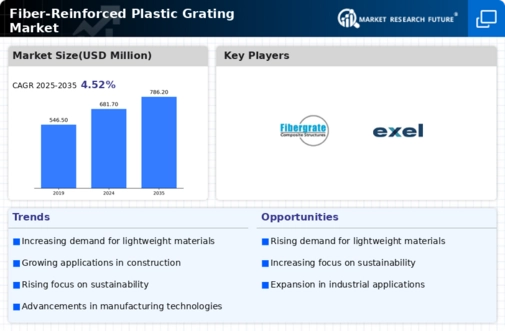
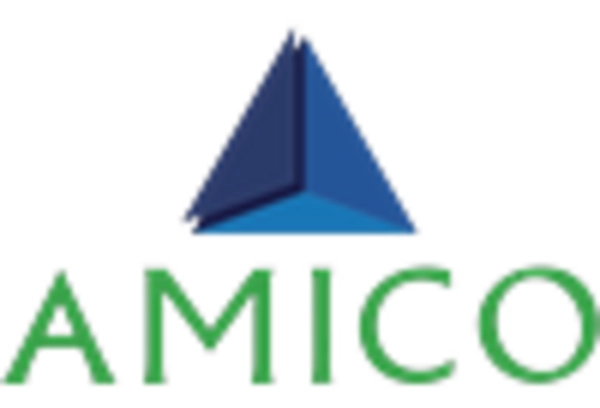
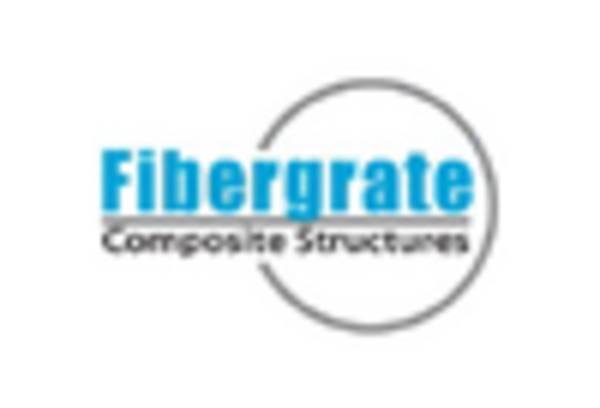
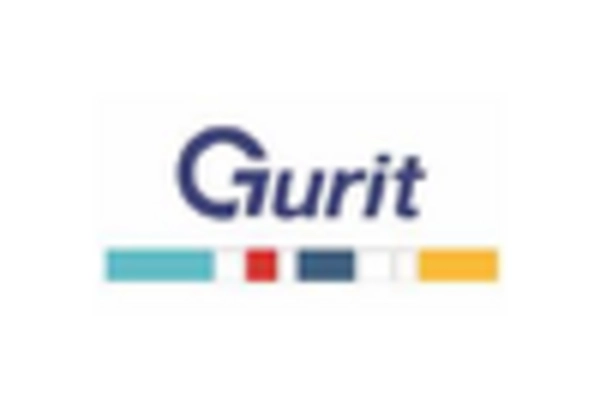
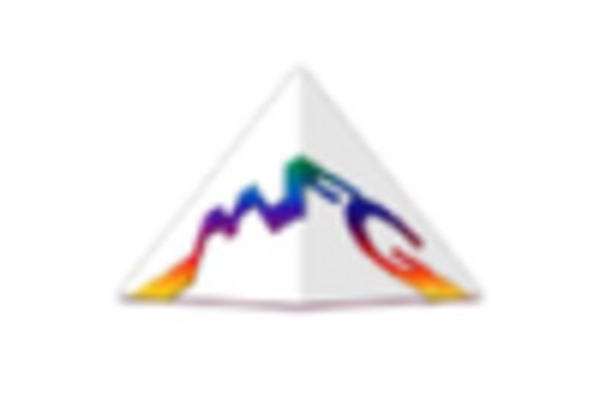

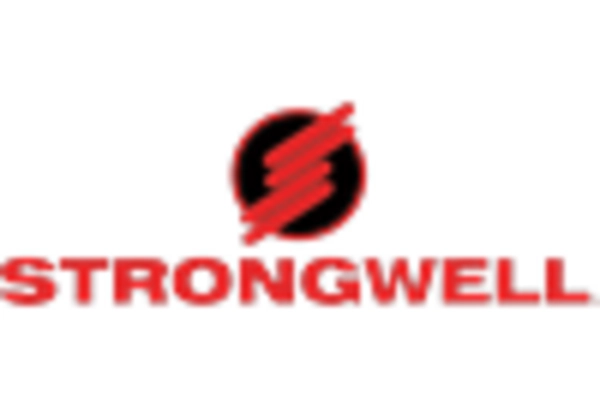









Leave a Comment